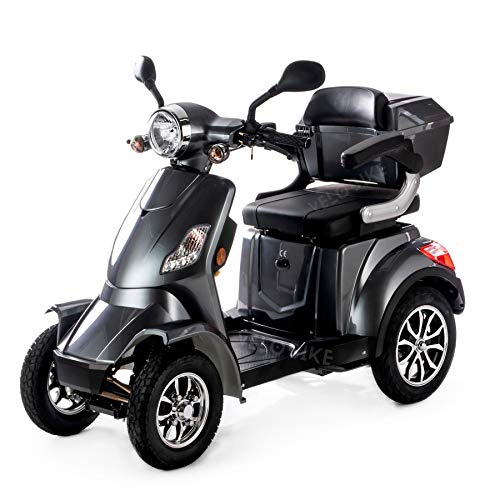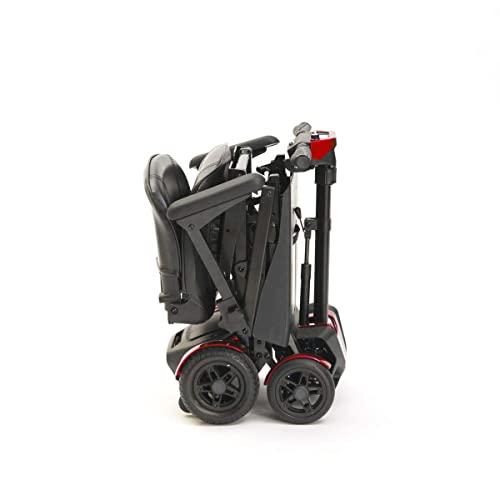An Guide To Pet Safety In 2023
페이지 정보

본문
Pet Safety Tips
 Pets can find anything in the house to play with, therefore it's essential to stay away from food items that could cause them to become sick or plants that can be poisonous. The NC State College of Veterinary Medicine offers some safety tips.
Pets can find anything in the house to play with, therefore it's essential to stay away from food items that could cause them to become sick or plants that can be poisonous. The NC State College of Veterinary Medicine offers some safety tips.
 Fireworks can be frightening for pets, which is why they should be kept in the safest place, like a crate or in a secure area during fireworks shows. They should also wear a collar with identification tags and be microchipped.
Fireworks can be frightening for pets, which is why they should be kept in the safest place, like a crate or in a secure area during fireworks shows. They should also wear a collar with identification tags and be microchipped.
Check the Garage
The garage is a safe haven for potential dangers for pets including plants that can be poisonous to animals to chemicals and fertilizers. Make sure that all cleaning and chemical products are stored in cabinets that are locked with a latch a pet isn't able to reach. Also, make sure that propane cans, gas tanks, and other materials that are flammable are not kept in the garage or within easy reach of a curious dog or cat.
Take a picture of you and your pet in your evacuation kit. This will help other people identify you in the event you become separated. Include your pet's favorite bedding or toys to alleviate stress during evacuation.
Find local veterinary clinics, animal shelters and other pet-friendly accommodations along evacuation routes. Keep a harness or leash designed specifically for your pet handy. These are essential tools to keep them under control. Make sure that your pet is wearing a microchip or a collar that is current with contact information.
Be aware that hot weather can result in overheating for humans and pets. Drowsy panting, heavy panting and an increased heart rate are all indicators of an overheated. Overheating is more likely to occur in pets with respiratory problems or those who are brachycephalic.
Lastly, ensure that any recycling bins or garbage cans are secured to stop rodents from gaining access to them. Keep garbage in containers that can't be accessed by pets, and remove any choking and poisonous items like buttons or strings. For cats, be sure to seal the lids of your toilets, as the yucky smell of a full tank can make them want to drink its contents. This could cause death!
Create a Plan for a Disaster Plan
If you live in an area prone to natural disasters, it is essential that your pets are prepared too. You can do this by developing the disaster plan and then assembling a pet emergency kit.
This plan can assist you and your pet to survive an evacuation, especially in emergencies that happen without warning. You can also create a list of family members, friends, or neighbors who are willing to take in your pets in the event of an emergency.
Include the most recent photo and description of your pet in the event that they become lost or separated from you during an emergency. Additionally, you should keep your pets on leash or in a carrier at all times, and make sure to keep them close to you during emergencies. This will help you make sure that they don't run away or become injured.
Even the gentlest animals can become aggressive or defensive in the event of an emergency. In the situation of an emergency your pets could become confused in the event that their scent markers which normally identify their home, have been destroyed. Make sure your pets are kept indoors and under direct supervision throughout the event of a disaster. Also, monitor air quality closely since smoke can harm both humans and pets.
Include basic items such as food, water and medicine in a watertight, airtight container. You should also include a leash, harness and carrier that fits the pet, along with a pet bed, blanket or a favorite toy that can provide comfort in a stressful situation. You should also include a manual can open in the event that your pet consumes canned food. Also, remember to make sure to check your pet's supplies regularly to ensure that all of the supplies are fresh and still functional.
Keep Your Pets Indoors
Some pet owners believe it is best to keep their pets in a secure area during the holidays. Loud fireworks and loud noises can be extremely frightening for pets, especially smaller breeds or ones who are already anxious. They may be affected by the heat of outdoor celebrations and events.
Make sure your pet and cat stay in the house during these events to safeguard them from possible dangers like fireworks that explode or being struck by an ill-lit pumpkin. Pets and dogs that are not kept inside during these times, even in fenced-in backyards or on leashes, may be at risk of being attacked by other dogs or encountering local wildlife.
The fireworks, 836614 (knowing it) especially the ones that are lit are extremely dangerous for pets and can cause severe burns or trauma. The noises and light can also cause a pet to become confused and lost, or scared. If your dog is scared of fireworks, get him exercise before the festivities begin and keep him in a safe place with you or a trusted neighbor during the time they are taking place.
If your pet chews, take objects that can be swallowed easily like strings, small bones or toys, out of reach before you leave for a few days. They can be harmful if they are ingested which can cause stomach discomfort. Certain seasonal plants like poinsettias and holly, 836614 as well as mistletoe are poisonous to cats and dogs.
Some dogs and cats especially those with flat faces like pugs and Persians are prone to heat stroke if left unattended in hot weather. Keep them inside during the hottest time of the day. Give them plenty of shade and cool water as well as food. Avoid leaving them in vehicles that are parked which could lead to heat stroke.
Beware of walking on Frozen Water
During the winter, frozen lakes, ponds, and canals can be tempting for both pets and children. These bodies of water can be dangerous. It is not recommended to walk on the ice or accompany their pet on the ice in any way. The ice's strength can be difficult to gauge by eye and temperature fluctuations could alter its structure. Ice formed by rivers is usually affected by currents that can cause it to weaken or even break. Call 911 immediately if someone is injured by the ice. Do not try to save them yourself. This could cause more harm.
Additionally, dogs should be kept on a leash close to water bodies and should not be allowed to take a dip in lakes or ponds. Dogs can become infected by Leptospirosis when they ingest unclean water. It is a potentially dangerous bacteria-related infection that can harm kidneys and other vital organs. Children can also become infected when they come in contact with urine from affected dogs and other animals.
Certain plants and trees can be harmful to pets and should be avoided. Japanese yews, in particular contain toxins that can cause blood pressure and heart rate issues in cats and dogs if they are ingested. The bulbs of tulips, daffodils and other blooms are poisonous and can lead to stomach upset and obstruction problems in pets if dug up and consumed.
Animals' behavior may change drastically after a catastrophe, a flash flood or a storm. They may act aggressively or become fearful when they are frightened or unfamiliar with new situations. It is recommended to keep pets on leashes or in carriers when they are outside of the house and to teach them safety guidelines for interactions with other people, which includes strangers, children, and guests.
Make Sure Your Pet Has a Leash
A leash is a cord or rope that is affixed to a dog's collar which aids the owner in controlling the animal on walks. Leashes are crucial to ensure your pet's safety and security.
Many cities have laws that require dogs to be secured in parks and public areas. This isn't just for your own security, but for the protection of animals and other people too. Dogs who are allowed to run free may end up getting hit by cars and even creating accidents. They can also get chased by other dogs or animals and might be injured in the process.
If a dog isn't on leash, they could look around for things that are harmful to them or even dangerous. For instance, other people's feces and poisonous plants. They may also be exposed to polluted water or puddles with pesticides.
Leashes aren't just legally required, but they can also help you train your dog to be more secure in everyday situations. They stop them from being chased by other animals or people, running off into traffic areas or other dangerous places, smelling or eating things they shouldn't, digging up lawns, and getting lost during walks.
It's also crucial to have a leash on because it will make you more visible to other people walking your dog. Some people have a fear of dogs and are more likely to become scared or irritable when approached by one. Leashes can be beneficial for those who have an sensitivity to certain smells or who are allergic to dogs.
 Pets can find anything in the house to play with, therefore it's essential to stay away from food items that could cause them to become sick or plants that can be poisonous. The NC State College of Veterinary Medicine offers some safety tips.
Pets can find anything in the house to play with, therefore it's essential to stay away from food items that could cause them to become sick or plants that can be poisonous. The NC State College of Veterinary Medicine offers some safety tips. Fireworks can be frightening for pets, which is why they should be kept in the safest place, like a crate or in a secure area during fireworks shows. They should also wear a collar with identification tags and be microchipped.
Fireworks can be frightening for pets, which is why they should be kept in the safest place, like a crate or in a secure area during fireworks shows. They should also wear a collar with identification tags and be microchipped.Check the Garage
The garage is a safe haven for potential dangers for pets including plants that can be poisonous to animals to chemicals and fertilizers. Make sure that all cleaning and chemical products are stored in cabinets that are locked with a latch a pet isn't able to reach. Also, make sure that propane cans, gas tanks, and other materials that are flammable are not kept in the garage or within easy reach of a curious dog or cat.
Take a picture of you and your pet in your evacuation kit. This will help other people identify you in the event you become separated. Include your pet's favorite bedding or toys to alleviate stress during evacuation.
Find local veterinary clinics, animal shelters and other pet-friendly accommodations along evacuation routes. Keep a harness or leash designed specifically for your pet handy. These are essential tools to keep them under control. Make sure that your pet is wearing a microchip or a collar that is current with contact information.
Be aware that hot weather can result in overheating for humans and pets. Drowsy panting, heavy panting and an increased heart rate are all indicators of an overheated. Overheating is more likely to occur in pets with respiratory problems or those who are brachycephalic.
Lastly, ensure that any recycling bins or garbage cans are secured to stop rodents from gaining access to them. Keep garbage in containers that can't be accessed by pets, and remove any choking and poisonous items like buttons or strings. For cats, be sure to seal the lids of your toilets, as the yucky smell of a full tank can make them want to drink its contents. This could cause death!
Create a Plan for a Disaster Plan
If you live in an area prone to natural disasters, it is essential that your pets are prepared too. You can do this by developing the disaster plan and then assembling a pet emergency kit.
This plan can assist you and your pet to survive an evacuation, especially in emergencies that happen without warning. You can also create a list of family members, friends, or neighbors who are willing to take in your pets in the event of an emergency.
Include the most recent photo and description of your pet in the event that they become lost or separated from you during an emergency. Additionally, you should keep your pets on leash or in a carrier at all times, and make sure to keep them close to you during emergencies. This will help you make sure that they don't run away or become injured.
Even the gentlest animals can become aggressive or defensive in the event of an emergency. In the situation of an emergency your pets could become confused in the event that their scent markers which normally identify their home, have been destroyed. Make sure your pets are kept indoors and under direct supervision throughout the event of a disaster. Also, monitor air quality closely since smoke can harm both humans and pets.
Include basic items such as food, water and medicine in a watertight, airtight container. You should also include a leash, harness and carrier that fits the pet, along with a pet bed, blanket or a favorite toy that can provide comfort in a stressful situation. You should also include a manual can open in the event that your pet consumes canned food. Also, remember to make sure to check your pet's supplies regularly to ensure that all of the supplies are fresh and still functional.
Keep Your Pets Indoors
Some pet owners believe it is best to keep their pets in a secure area during the holidays. Loud fireworks and loud noises can be extremely frightening for pets, especially smaller breeds or ones who are already anxious. They may be affected by the heat of outdoor celebrations and events.
Make sure your pet and cat stay in the house during these events to safeguard them from possible dangers like fireworks that explode or being struck by an ill-lit pumpkin. Pets and dogs that are not kept inside during these times, even in fenced-in backyards or on leashes, may be at risk of being attacked by other dogs or encountering local wildlife.
The fireworks, 836614 (knowing it) especially the ones that are lit are extremely dangerous for pets and can cause severe burns or trauma. The noises and light can also cause a pet to become confused and lost, or scared. If your dog is scared of fireworks, get him exercise before the festivities begin and keep him in a safe place with you or a trusted neighbor during the time they are taking place.
If your pet chews, take objects that can be swallowed easily like strings, small bones or toys, out of reach before you leave for a few days. They can be harmful if they are ingested which can cause stomach discomfort. Certain seasonal plants like poinsettias and holly, 836614 as well as mistletoe are poisonous to cats and dogs.
Some dogs and cats especially those with flat faces like pugs and Persians are prone to heat stroke if left unattended in hot weather. Keep them inside during the hottest time of the day. Give them plenty of shade and cool water as well as food. Avoid leaving them in vehicles that are parked which could lead to heat stroke.
Beware of walking on Frozen Water
During the winter, frozen lakes, ponds, and canals can be tempting for both pets and children. These bodies of water can be dangerous. It is not recommended to walk on the ice or accompany their pet on the ice in any way. The ice's strength can be difficult to gauge by eye and temperature fluctuations could alter its structure. Ice formed by rivers is usually affected by currents that can cause it to weaken or even break. Call 911 immediately if someone is injured by the ice. Do not try to save them yourself. This could cause more harm.
Additionally, dogs should be kept on a leash close to water bodies and should not be allowed to take a dip in lakes or ponds. Dogs can become infected by Leptospirosis when they ingest unclean water. It is a potentially dangerous bacteria-related infection that can harm kidneys and other vital organs. Children can also become infected when they come in contact with urine from affected dogs and other animals.
Certain plants and trees can be harmful to pets and should be avoided. Japanese yews, in particular contain toxins that can cause blood pressure and heart rate issues in cats and dogs if they are ingested. The bulbs of tulips, daffodils and other blooms are poisonous and can lead to stomach upset and obstruction problems in pets if dug up and consumed.
Animals' behavior may change drastically after a catastrophe, a flash flood or a storm. They may act aggressively or become fearful when they are frightened or unfamiliar with new situations. It is recommended to keep pets on leashes or in carriers when they are outside of the house and to teach them safety guidelines for interactions with other people, which includes strangers, children, and guests.
Make Sure Your Pet Has a Leash
A leash is a cord or rope that is affixed to a dog's collar which aids the owner in controlling the animal on walks. Leashes are crucial to ensure your pet's safety and security.
Many cities have laws that require dogs to be secured in parks and public areas. This isn't just for your own security, but for the protection of animals and other people too. Dogs who are allowed to run free may end up getting hit by cars and even creating accidents. They can also get chased by other dogs or animals and might be injured in the process.
If a dog isn't on leash, they could look around for things that are harmful to them or even dangerous. For instance, other people's feces and poisonous plants. They may also be exposed to polluted water or puddles with pesticides.
Leashes aren't just legally required, but they can also help you train your dog to be more secure in everyday situations. They stop them from being chased by other animals or people, running off into traffic areas or other dangerous places, smelling or eating things they shouldn't, digging up lawns, and getting lost during walks.
It's also crucial to have a leash on because it will make you more visible to other people walking your dog. Some people have a fear of dogs and are more likely to become scared or irritable when approached by one. Leashes can be beneficial for those who have an sensitivity to certain smells or who are allergic to dogs.
- 이전글14 Questions You Might Be Anxious To Ask 4 Wheeled Scooters 24.08.25
- 다음글Как и где заказать монтаж вендингового оборудования 24.08.25
댓글목록
등록된 댓글이 없습니다.








